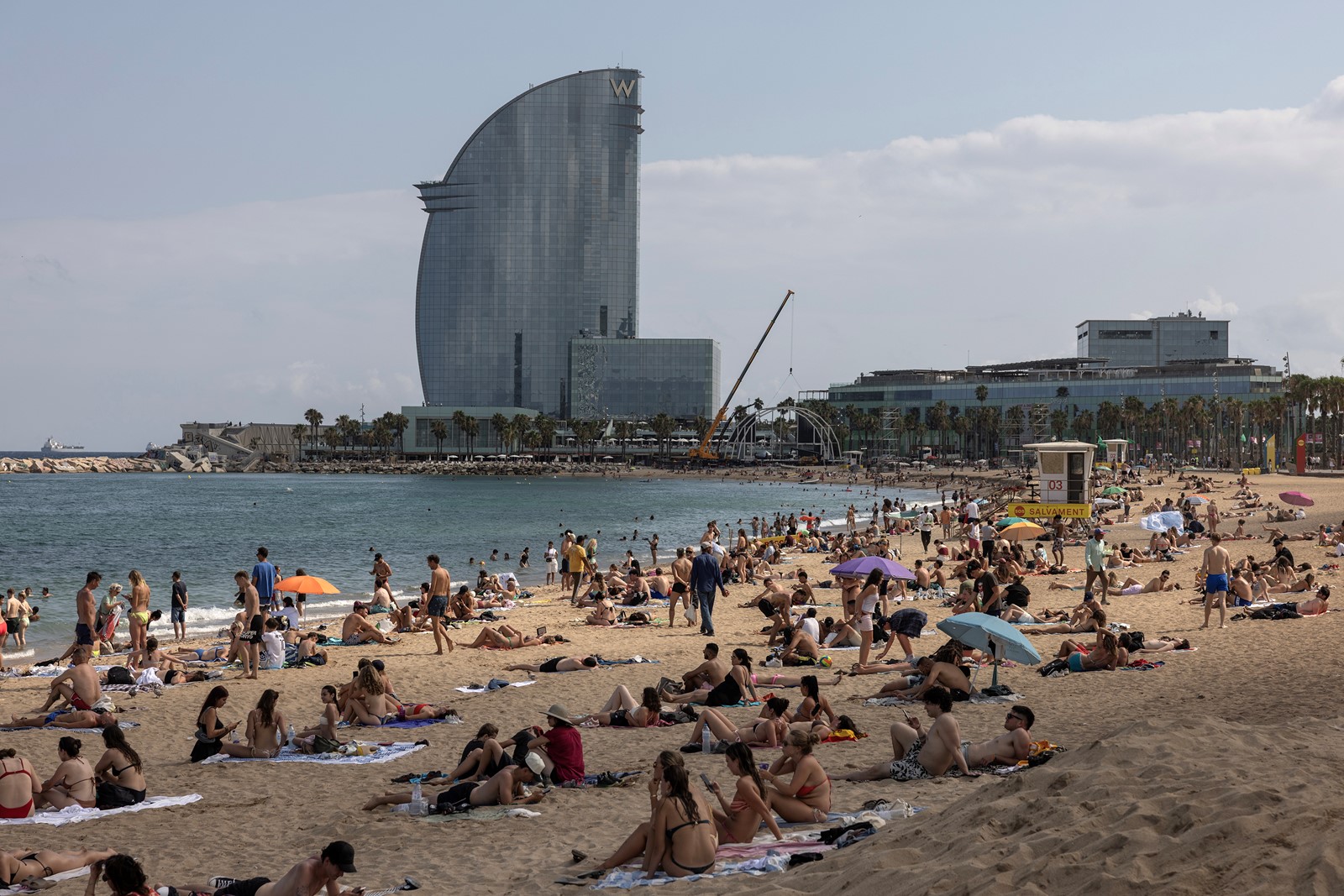
BARCELONA, Spain — Not so long ago, families coming to the shore in Montgat, Spain, just outside Barcelona, built sand castles, played paddle games and lounged around on the broad band of sand that was the picture of the European summer vacation. But now in some places, there is hardly enough room to put down a towel.
“From here to there,” said Sofia Mella, 19, as she pointed far out to sea, “it was all sand.”
Climate change is changing Europe into a summer paradise lost. Across Spain, Italy, Greece, France and beyond, sand-devouring storms, rising seas, asphyxiating temperatures, deadly floods and horrific wildfires have year after year turned some of the continent’s most desired getaways into miserable locales to get away from.
As southern Europeans dream of fjords, the traditional hot spots and fixtures of travel agency package deals no longer seem so desirable. Last week, even though temperatures broke across much of the continent, experts and officials warned that the next heat wave would come soon, endangering vulnerable locals and making tourists question what they had gotten themselves into. Even activists seeking to free their cities from the scourge of overtourism saw no silver lining to the brutal conditions.
“It’s hell,” said Daniel Pardo Rivacoba, who lives in Barcelona, and who spoke for a group fighting overtourism — and its climate-change fueling flights. He saw the scorching sun not as an ally to keep the tourists away, but as a common enemy that will melt them both.
Last year, Pardo Rivacoba’s group went viral by organizing demonstrations against overtourism that including spraying tourists with water guns. This year, he said, it was so hot that “we used the water guns on ourselves.”
Across the continent, June was the cruelest month. So far. In Rome, tourists rotated around the city’s sites as if spinning in an outdoor microwave. Opera singers in Verona passed out in their costumes.
But Spain has become the least fun-in-the-sun destination. Temperatures in the southwestern city of El Granado reached nearly 115 degrees (46 degrees Celsius), a national record for June. And there were other grim metrics. Last year, floods in Valencia killed more than 200 people; this year, experts say excess deaths, especially among the ailing and elderly, have risen sharply with the temperatures.
Climate change is also transforming the Spanish landscape, including the beach in Montgat, where increasingly frequent storms have washed much of the sand away.
Barcelona, only a few miles away, has reported losing 30,000 square meters of sand over the past five years. Marina d’Or, outside Valencia farther south, was envisioned by developers and families across Spain as a seaside resort, an emblem of the country’s beach holidays. Now, storms have washed some of its beaches away, too. Experts have estimated the loss of hundreds of thousands of square meters of beach across the country, and warned about desertification.
Spain knows it has a problem. In a time of right-wing opposition to Europe’s environment-protecting Green Deal regulations — “greenlash,” it has been called — the progressive government of Spain has embraced an ecological transition.
The government, proud of its well-performing economy, is working to attract hundreds of billions of euros in investments in sustainable energy to create hundreds of thousands of new green jobs. It seeks to invest in temperature prediction systems to foresee heat waves, and to train health care workers who will be forced to treat more heat-related illnesses. It is trying to increase energy efficiency and reduce greenhouse gas emissions.
At more local levels, cities including Barcelona are also trying to mitigate the damage wrought by a changing climate.
Laia Bonet, the city’s first deputy mayor responsible for ecology and urban planning, said that Barcelona was “especially exposed to the effects of climate change,” and that it was working to address the reality of a hotter city with higher sea levels and eroded beaches.


 PREVIOUS ARTICLE
PREVIOUS ARTICLE
